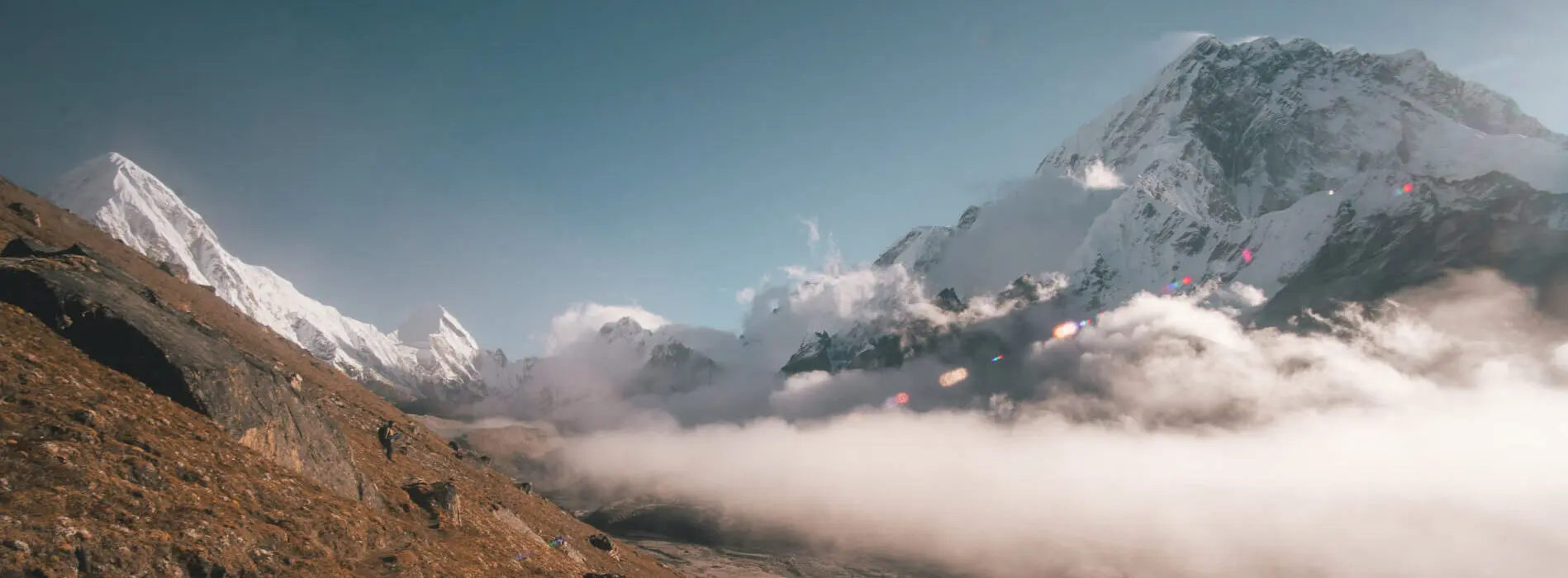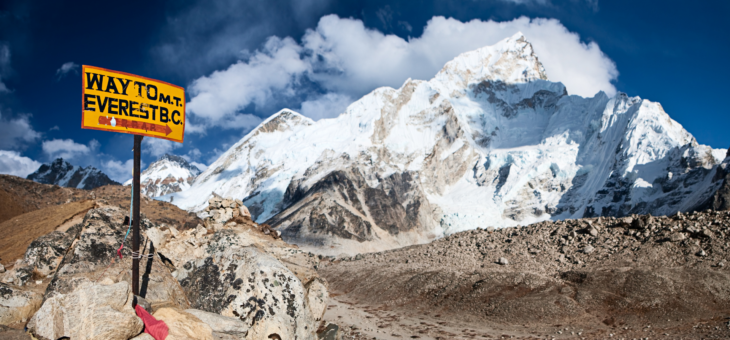Big thanks to Rob Coffey for writing this article. Rob is an experienced Earth’s Edge guide who specialises in Adventure Therapy and Education. Here he answers the question “Is Everest Base Camp dangerous for trekking?
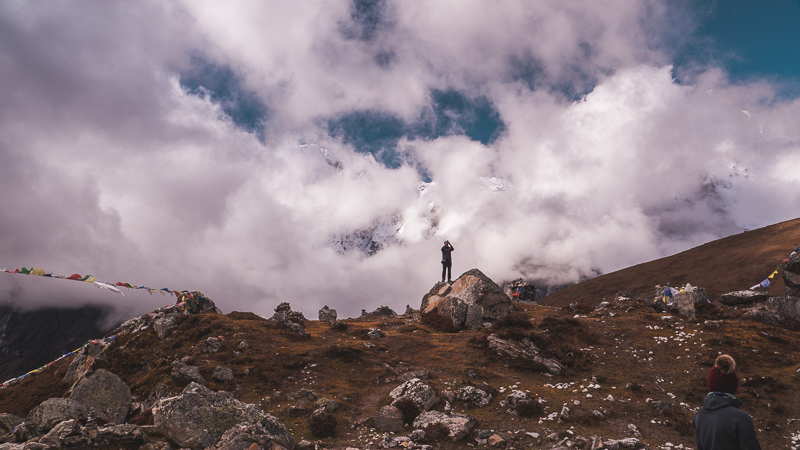
Is Everest Base Camp Dangerous?
It’s an interesting question to ask; is this trek dangerous to an average, fit trekker?
I would have to answer that yes it is. The Everest Base Camp trek involves spending almost 3 days at around an altitude of 5000 m. This is within the danger zone for AMS, HAPE and HACE. The ascent profile to this altitude is slower say than Killimajaro, which makes the likely hood of getting sick lower.
However, unlike Kilimanjaro, we spend more time above 5000m and we aren’t able to descend as quickly. On our trip, our doctor diagnosed one member of the group with early-onset HAPE. This was before our ascent up to 5000m. The decision was straightforward- the client had to descend.
Altitude sickness is the main danger for trekkers on this trail. Occurrences like earthquakes and landslides are incredibly rare, and really don’t pose much threat to trekkers. People see news reports about avalanches, but these are usually much higher up beyond base camp. You’ll only need to worry about them if you’re going to the summit!
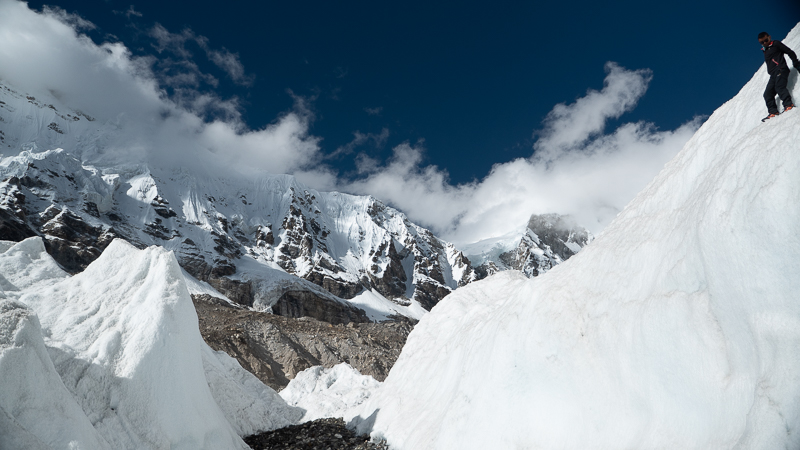
Altitude Sickness on Everest Base Camp Trek
At Gorakshep, most clients showed symptoms of mild AMS- headache, difficulty breathing, and some mild nausea. This is normal enough at this altitude. None, however, showed signs of moderate to severe AMS, which would have necessitated an immediate descent. The good news that the local guides and hotels are very experienced and well equipped at dealing with AMS. Oxygen is readily available, and helicopter evacuation is also available, depending on the weather. If I were to get sick with AMS, HAPE or HACE, I don’t think there is anywhere else in the world I would rather be.
Acute mountain sickness (AMS)
For potential clients, it is a good idea to be aware of the risks of high altitude trekking. At Earth’s Edge, we mitigate these risks by having a doctor on every trip.
Acute mountain sickness (AMS), an illness at altitude that can include a spectrum of symptoms, including headache, fatigue, nausea and/or vomiting, dizziness, and difficulty sleeping at altitude. Acute mountain sickness has two more extreme forms.
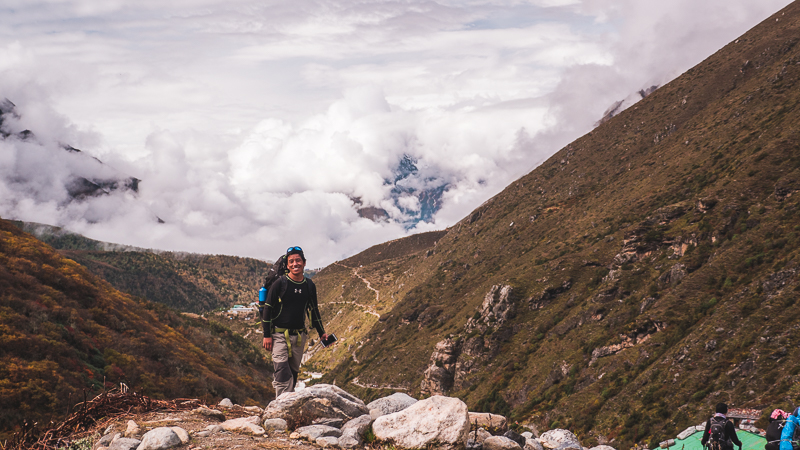
High-Altitude Pulmonary Edema (HAPE)
The first, High-Altitude Pulmonary Edema (HAPE) occurs in response to a shortage of oxygen at higher altitudes. This results in lung vessels weakening and eventually rupturing as a result of the pressure. This can cause a dangerous build up of fluid. Symptoms of HAPE include extreme fatigue, breathlessness at rest, and coughing up blood.
High-Altitude Cerebral Edema (HACE)
HAPE can lead to High-Altitude Cerebral Edema (HACE), in which the brain accumulates extra fluid, swells and stops working properly. An increase in blood flow is a normal response to low oxygen levels at higher altitudes, as the body needs to maintain a constant supply of oxygen to the brain. However, if the blood vessels in the brain are damaged, fluid may leak out and result in HACE. Confusion, altered mental state, fever, and loss of consciousness can result. HAPE and HACE are treatable if diagnosed quickly, but they can be deadly if not.
The science behind who gets sick and who does not is inexact- often very fit people can struggle. It’s often nothing to do with fitness. The best advice is to ascend slowly, drink plenty of fluids and take diamox as prophylaxis. On an Earth’s Edge’s trek, we take a relatively gentle ascent profile and we spend two nights in both Namche Bazaar and Dingboche. These acclimatisation days are really essential. Ascending slowly, even when feeling really strong, is key.
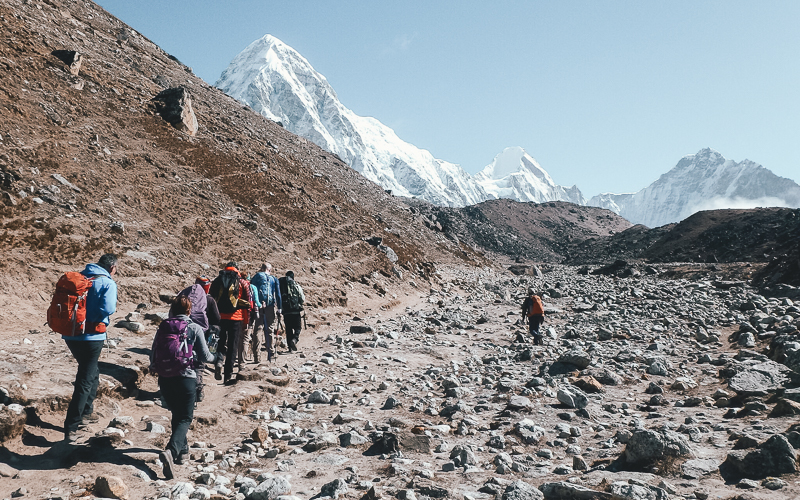
Other dangers on the trek
Other issues that make can make Everest Base Camp dangerous are the standard risks of trekking. Overexertion leading to injury, dehydration, and falling are your main enemies. These issues are nothing that an experienced guide can’t deal with. A surprising but extremely rare potential risk is the risk of a glacial lake busting- a GLOF, or Glacial Lake Outburst Flood. A glacial lake outburst flood is a type of outburst flood occurring when water dammed by a glacier or a moraine is released. These catastrophic events do occur in the Himalayas every few years, leading to mayhem and disaster for anyone unlucky enough to be caught in its path. These events are, luckily, very rare. But in every Himalayan valley, you will see warning signs of what to do in the event of a GLOF. Get to high ground to avoid this Tsunami of glacial debris.
Finally, dehydration is probably the biggest danger on the trail, especially high altitude trekking in the Himalayas. Many people underestimate the amount of water they need when engaged in vigorous activity. At altitude, one loses more water than then at lower altitudes while breathing because of the dry air. Due to the lower temperatures, people don’t feel like drinking water and end up being dehydrated. Drink little and often is the key!
So, is Everest Base Camp dangerous? Well, it’s generally a very safe trip in a controlled environment, but risks are there. Better to aware, and plan for all eventualities.
________________________________
The vast majority of people who visit Everest Base Camp don’t have any bad experiences on their trek. This means that most tour providers don’t bother bringing a doctor with them on an expedition.
Here at Earth’s Edge, we don’t want to take that risk and we bring a fully qualified doctor on all our expeditions. This means that you have peace of mind on the trail, and you can just focus on the stunning surroundings!
If you’re interested in going on your own Everest Base Camp Adventure, you can contact us and we’ll get you on your way!
